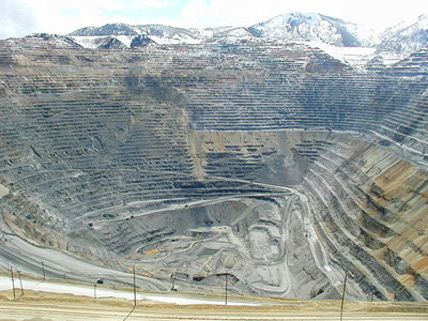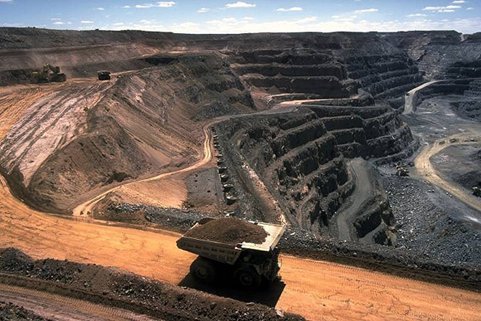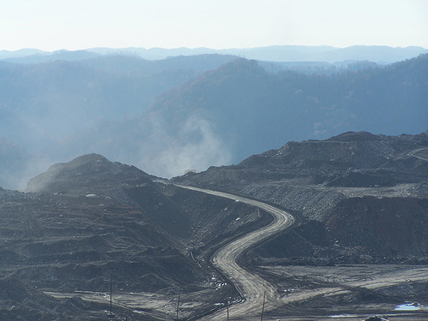Surface Mining
Once a suitable ore is located, the material needs to be collected. The first option is surface mining, which is used when the ore is found fairly close to Earth’s surface. (Note that "fairly close" to Earth’s surface can still mean thousands of feet deep, since Earth’s crust is several miles deep.)
Surface mining is what we use to obtain about 90 percent of the non-fuel minerals we extract in the U.S. Gigantic mechanized equipment removes the upper layer of soil and rock. This unwanted upper layer is called the overburden. It is usually piled up in giant waste piles called spoils. In the Kennecott copper mine, gigantic trucks scoop up tons of overburden material everyday. There are several categories of surface mining. Click each image to learn about them.

Open-pit mining is the cheapest and easiest type of surface mining. Machines dig the holes or explosives may be used to break up especially large rocks. Then the ore is extracted from the holes. The mineral ore is taken out layer by layer, and the hole just keeps getting bigger as each layer of ore is removed. The Kennecott copper mine is an example of this type of mining. Copper, gold, granite, and gravel are commonly mined this way.
Strip mining is similar to open-pit mining. It is used to collect mineral deposits that are close to the surface in horizontal beds. In strip mining, the overburden is removed, and then lots of small holes are drilled in the rock just over the ore. Explosives are then placed in the holes to break up the rock so that it is easier to find the mineral. Strips of land are mined one at a time. Each successive strip is cut out parallel to the previous one.
Mountaintop removal uses explosives and huge machinery, called draglines, to remove the top of a mountain and expose seams of coal. All the trees are cut down to the ground level. Then the area is blasted with dynamite down to the first layer of coal. All the overburden is hauled down to the valley and dumped in areas called valley fills.
© KC Distance Learning. All rights reserved.





